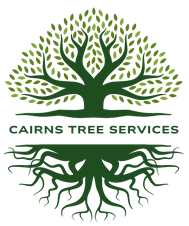It can be a real struggle to take care of the trees during the wet period, mainly when the ground is waterlogged. Too much rainfall is one of the main causes of bad drainage, which in turn will suffocate the tree roots and increase the chance of root rot. When ignored, this problem will lower the tree’s defense system against diseases and insects simply by making the tree sick. This blog will focus on efficient waterlogged ground solutions and essential wet season tree care strategies that will assist in the protection of your trees from the rains.
Why Wet Season Tree Care is Crucial for Waterlogged Soils

Waterlogged soils are slow-draining soils that are overly saturated with water. When such conditions persist, trees have low chances of survival as the soil becomes devoid of oxygen, which is necessary for root development. If this happens, the roots would most likely rot due to a lack of oxygen. Over time, without intervention, people may experience stunted growth, yellowing leaves, and even premature death of the tree.
Symptoms of Waterlogged Soil
One of the main ways of wet season tree care is to detect waterlogged soil in the early phases. Here is what to look for:
- Puddles of water staying for a longer time after the rain.
- A pungent odor due to a lack of oxygen in the soil.
- Yellowing or wilting leaves.
- Moss and algae growing on the soil surface.
- Soft or decaying roots.
On top of all these signs, you might also notice that your trees are growing slower, and the number of fungal infestations has increased. Waterlogged soil creates the perfect breeding ground for harmful fungi, which can further weaken trees. The overabundance of water may also lure in some pests, which are attracted to the moisture and can cause additional stress to tree health. To make sure your trees stay strong, it is important to take immediate action and implement wet season tree care strategies that promote better soil drainage and root health.
Effective Wet Season Tree Care Strategies for Waterlogged Soil

To minimize damage, here are some solutions and approaches to waterlogged soil that can enhance drainage and protect trees.
1. Improve Soil Drainage
Improving soil drainage is the best solution to prevent waterlogged soil. Organic matter such as compost can be added to enhance soil structure, heavy clay soils can be mixed with sand or gravel to enable water flow, and raised beds or mounds can be made to allow new trees to place root systems above poorly drained soils.
2. Soil Aeration

Aeration of soil aids in loosening the compact soil, enabling oxygen to circulate around tree roots. You can aerate soil by using a garden fork to create small holes in the soil surface, using a core aerator for bigger areas, and mulching around shrubs and trees to both keep the soil moisture and lessen the compaction of the soil.
3. Irrigation Management
Good irrigation management minimizes the damage done in the wet season and ensures the trees are not overwatered. For this objective, steps include changing the irrigation schedule to lessen watering for periods of light rainfall, using a drip irrigation system to control water application, and using rainwater sensors and controllers to avoid overwatering.
4. Treatment of Root Rot
In case trees are infected with rot, good management should be set in place immediately. Root rot treatment consists of the removal of diseased roots, applying fungicides specifically designed for root diseases, and improving drainage and soil aeration to prevent recurrence.
5. Planting Water-Tolerant Trees

In case of frequent flooding in the area, suitable trees that tolerate waterlogged soil should be planted. Some of these include Bald Cypress, Red Maple, and River Birch.
Long-Term Wet Season Tree Care Solutions
With proactive planning, trees can be managed optimally throughout the wet season. French drains are helpful as they work like underground ditches and limit water access to trees. Creating a rain garden is also very beneficial as it captures runoff water and restricts excess water from settling around the base of the tree. Moreover, regular testing of the soil is advantageous as it provides information concerning the composition and its ability to drain water, ensuring it will remain suitable for tree health.
Worry No More, Get Professional Help

If your trees are still struggling with excess water in the soil, consider seeking professional assistance, including soil aeration, treating root rot, and managing irrigation. A specialist in wet season tree care will be able to examine your property and suggest what would be ideal for long-term tree health.
Final Thoughts
Caring for waterlogged soil during the wet season is preventative work. Proper irrigation, early root rot treatment, and improved drainage will help make sure your trees remain healthy and robust. These wet season tree care solutions will greatly minimize moisture damage to your landscape. Do not hesitate to reach out to a tree care expert should you require professional guidance. Combining all of these simple approaches will make sure that the trees will thrive even during the rainiest seasons.

